About this detail of the Tiger
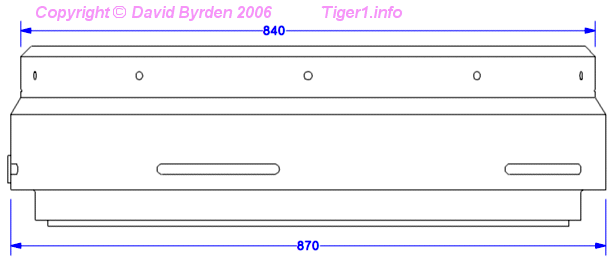
The main body of the drum cupola was an armoured ring. It had 5 vision ports and 10 rainwater drain holes spaced evenly around it.
One of the drain holes was blocked by the hatch lid holder. In the prototype vehicle there were drain holes directly above the vision ports, but in all production vehicles the holes were shifted by 18 degrees so that the water runoff did not pour directly onto any port.
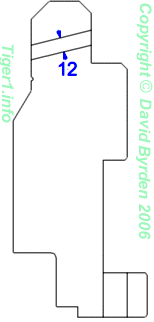
This is a profile of the main ring, showing a drain hole. The bottom of the ring was shaped to fit into the cupola's base ring. There were bolt holes in flanges for fixing the ring to the base.
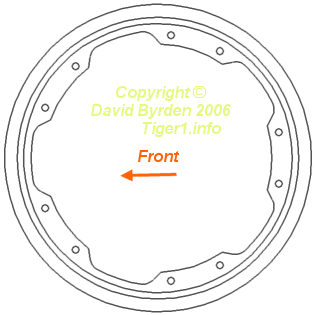
This view from underneath shows the flanges and the bolt holes.
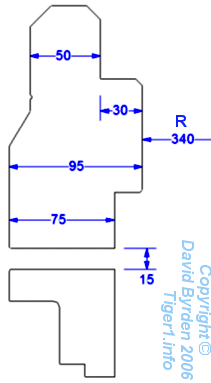
The vision slits were 15mm high. Armour thickness at the slots, i.e. the protection for the commander's head, was only 75mm.
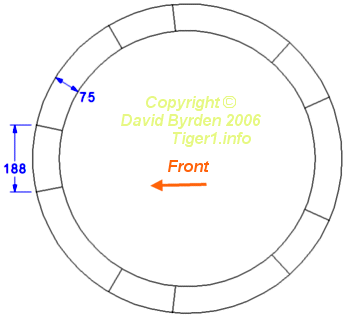
This plan view shows that the vision ports were spaced evenly around the cupola.
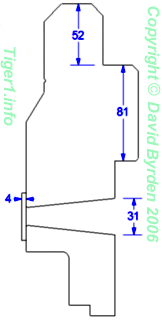
German cupolas always had one vision port facing directly forwards so that the commander could aim the gun. In the Tiger's drum cupola, the forward-facing port was tapered on the inside. This gave the commander the maximum possible vertical field of view in this direction. (The glass vision block inside the cupola was the limiting factor).
A piece of wire was welded to the front of this vision slot. The commander could see the approximate direction of the gun by lining up this wire with another wire inside the cupola. In some Tigers, the crew welded a pointer at the front of the turret for more accurate aim.
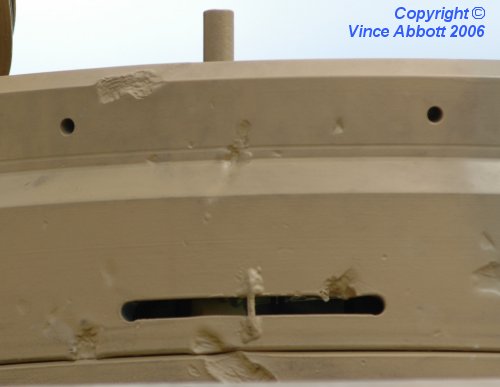
This photo (of the Bovington Tiger) shows the forward vision port, the aiming wire, and two drain holes.
[1] Survey of Tiger 250122, at Bovington, by Vince Abbott
[2] Survey of Tiger 250122, at Bovington museum, by David Byrden